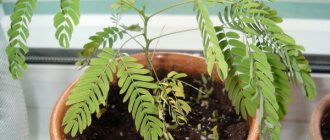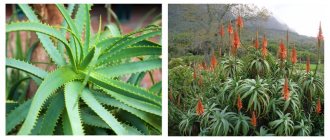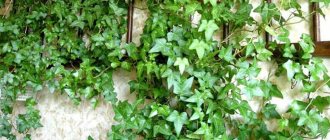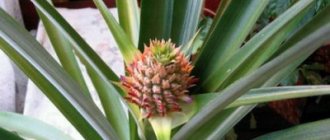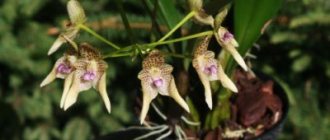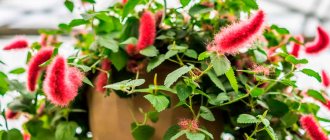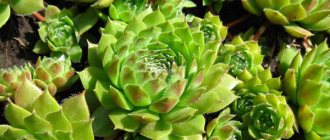Aconite (Aconitum) is classified as a member of the Buttercup family. According to one version, the aconite plant is named fighter. In Russia, the plant is called this because it helps in the fight against diseases. In our country, aconite tincture is famous in folk medicine.
Author of the article
Eleonora Borisova
Specialist in medicinal plants and their use in folk medicine.
It is not only the treatment with aconite that is famous. The flower is beautiful in appearance. It has luxurious flowers, but even in the deciduous period it pleases the eye with patterned greenery.
Aconite fits well into compositions and decorates the interior. You don't have to have a knack for gardening to grow aconite. It is important to simply listen to the recommendations of experienced specialists. Do not forget that aconite requires care. In this article we will talk about planting and care in open ground.
Botanical description
Flower growers classify aconite as a member of the Buttercup family. The plant is an erect, bush-shaped plant. In its natural environment, the height of the plant can reach three meters. The flower has a large, developed rhizome, with developed thin brown cords. Up to 15 roots appear on one plant at once, thanks to which the bush grows quickly and is quite unpretentious. This structure of the roots helps to keep the bush firmly on the ground in an erect form.
Among the people, the plant has a large number of names - fighter, wolf root, black potion, slipper.
Thick, light green stems emerge from the base of the rhizome in spring. The stem is dense, narrowed towards the apex. Dense petioles with shoots and leaves extend across the entire surface of the stem. The leaf blade of aconite is palmate. The leaves are large, which gives the plant additional decorativeness. The foliage on the plant is arranged alternately. The leaf blade is dark green, flat, and reaches 15 cm in diameter. Cuts on the foliage give the shrub an unusual appearance.
The plant blooms in large inflorescences. Flowering begins in July; the flowers remain on the plant almost until frost. The decorative nature of the flowers lies in their irregular shape. Various varieties may bloom with white, blue or yellow buds, but most bloom with purple buds. The flowering of aconite strongly resembles the inflorescences of lupines - the flowers are located at the top of the shoots, collected in several pieces.
After flowering, seed boxes are formed in place of the buds. The seeds ripen by mid-autumn. The seeds are quite small, brown or black in color.
Young plants are poisonous, but as they grow, aconite loses its poisoning ability, since the chemical element is removed from the foliage and stems.
Use in landscape design
Aconite is a very beautiful plant with bright flowers and oddly shaped leaves. Remains decorative throughout the year thanks to its carved leaves. Often used in composing various compositions.
For example, perfect for:
- single or group planting
- decoration and landscaping of a gazebo or veranda (climbing species, for example, aconite climbing)
- bouquets
- mixborders
- lawns
- discount
Spreading
It grows naturally in the center of Europe and northern Asia. A prerequisite for the existence of aconite is a large amount of fertile soil, so most often the flower grows in meadows and highlands and along rivers. Certain varieties of aconite grow in North America.
In Russia, aconite is an ornamental plant that is grown only under cultivation conditions. However, the flower grows quickly, so if not properly cared for it can go wild. Wild plants in Russia are found on the sites of old houses, abandoned areas and along roads.
Historical excursion
The history of the genus name is not known for certain. There are at least two possible origins: from a word meaning “cliff” or “rock” in Greek, and from a word that translates as “arrow”. And there is also a mythical explanation for the name: while performing his next feat, Hercules brought the three-headed dog Cerberus out of Hades, and he, breaking free, splashed everything around with his poisonous saliva; in those places where the drops fell to the ground, tall and thoroughly poisonous plants quickly rose, which were called aconites, since everything happened near the city of Akoni. And aconite was called a fighter in accordance with Scandinavian legend: it allegedly grew up in the place where Thor, who fought the poisonous reptile, died from its bites.
Types and varieties
The variety includes more than 300 varieties. Of these, about 4 varieties are found in the European part of Russia. To date, only 5 species of aconite have been cultivated, among which the most common are two-colored wrestler and glomerulus.
Monkshood bicolor two-color
An unusually colored plant. The peculiarity of the flower lies in its high decorative qualities, achieved due to the irregular shape of two-color white and blue inflorescences. The height of the bush can exceed one and a half meters. Racemose inflorescences rise above the foliage, located on a high peduncle.
The plant is also decorative due to its foliage, which is colored in dark shades of green and has a diamond shape. The leaf blade is smooth with a visible vein in the center. The foliage is arranged alternately on the stem.
Wolfsbane Eleonora
It is a small shrub with herbaceous foliage. The height of individual flowers does not exceed half a meter. The peculiarity of the plant is its thin stem, which droops under the weight of the foliage. Therefore, when growing decoratively, bushes need additional support.
The rich green tint of the foliage gives aconite an additional decorative effect. This type of borer has palmate, divided leaves located on the petioles. The leaves are quite large, despite the height of the plant itself, they can reach 15 cm along the central vein.
The wrestler blooms with large white inflorescences with a purple border. The flowers are racemose, at the top located on a high peduncle. Unlike other varieties, this species blooms in early summer and ends in mid-August. The plant is poisonous throughout its life.
Altai aconite
An ornamental plant that is found only in the Altai region, along the banks of rivers and lakes, meadows. The stems of this variety are covered with a large amount of green foliage. The shoots are quite thin, but tall, reaching a meter in length. Petioles and foliage are attached alternately over the entire surface of the stem.
The leaf blade of aconite is pentagonal and flat. The shade of the leaves above is dark green, and below is grayish. The leaves are petiolate, attached to the shoots alternately.
The inflorescences are large, collected in small cysts, like those of lupins. The plant blooms by mid-summer and continues to bloom until mid-August. The buds are dark blue, irregularly shaped flowers. The inflorescences are located on high peduncles, so they are visible from afar.
Where does aconite grow?
Monkshood is an inhabitant of alpine meadows at an altitude of 2000-2500 m above sea level. It prefers northern slopes with well-drained soil. The wolfwort flower, with its deeply located nectaries, is pollinated mainly by bumblebees, so the plant's habitat coincides with that of the striped insect.
The wrestler is found in Altai, Western Siberia, Central Asian countries, Mongolia, Tibet, Pakistan, and the USA. There is a version that the name of the plant comes from the Greek city of Akon, which indicates its distribution in Western Europe in the past.
Wild-growing northern aconite belongs to the plants of the forest zone, distributed all the way to Arctic Europe. As a garden plant, it can be used everywhere, but planting it in gardens is very risky due to its extreme toxicity.
Growth of aconite
Planting and care in open ground
Aconite is a fairly unpretentious plant that takes root well in various conditions. This condition allows the plant to be planted in garden conditions, both in the shade and in the sun. However, in order for the plant to bloom for a long time and grow normally for several years, the bush requires care and regular watering.
Young shoots are very poisonous and can cause poisoning. Therefore, before planting a bush, you should think about the fact that the flower should be located away from the constant presence of people in the place of growth. In addition, planting should be warned if there are children in the house.
Seeds are planted in the soil in the fall, before the onset of frost. Shoots appear in the spring. The seeds are first stratified for a month at a temperature of no more than 18 degrees.
Watering
The grapple needs to be watered as needed. Although the plant is unpretentious and can withstand dry soil quite well, it is worth preventing the soil from drying out. It is necessary to water aconite as the top layer of soil dries out.
In hot weather, watering becomes more frequent, since the plant requires a lot of moisture for active growth and development. It is necessary to water the wrestler carefully, without touching or flooding the foliage. In winter, watering stops.
When watering a plant, it is worth considering that the root system of aconite does not tolerate stagnant water quite well. Otherwise, the roots begin to rot, causing the flower to die.
You may be interested in: St. John's wort
Soil for aconite
Aconite is unpretentious to the composition of the soil. However, when grown in the garden, in order to obtain a truly ornamental plant, the wrestler is planted in a well-ventilated substrate. The soil for planting must be moist and contain a large amount of nutrients and minerals. Therefore, the flower cannot be planted in sand or rocky soil.
The soil must be loosened and ventilated throughout the flower’s growth. Some gardeners advise regularly weeding the soil to avoid damaging the roots with tools.
Transfer
Aconite is a perennial that does not require frequent replanting. However, for optimal flower growth, the location of the bush is renewed every 4-5 years.
Transplantation is carried out in the autumn, after removing the seeds from the bush and the death of the main leaves. A change of environment helps the flower not only get the necessary elements from the soil, but also maintain a neat appearance.
When transplanting a fighter, the hole for the plant is prepared in advance. The soil at the site of the new planting is loosened and dug up with the addition of peat and organic fertilizer. To do this, you need to dig a hole about half a meter deep. The size of the hole is selected based on the size of the earthen clod, digging out a slightly larger layer of earth. A layer of expanded clay is laid out at the bottom of the hole, which creates a layer of drainage. Then a small layer of fertilizing is created.
Since aconite has highly branched roots, the bush should be replanted with a lump of earth. This limits damage to small roots. After placing the kut in a new place, the remaining space in the hole is covered with peat and garden soil. The substrate is compacted to prevent the bush from falling. At the end of replanting, the bush is watered abundantly and the soil is mulched for a while.
Top dressing
Since aconite constantly grows in one place, the soil loses its mineral reserves and becomes poorer. In the spring, before a large number of leaves appear on the plant, organic fertilizer is applied to the soil. Mullein or bird manure are suitable as fertilizers. To obtain a liquid mixture, fertilizers are mixed with water in a ratio of 1:5. Watering is carried out under the roots of the flower.
After watering the soil with organic matter, immediately add a bucket of clean water. Thus, the remaining manure is washed off from the shoots and rhizomes, penetrating directly into the soil. In addition, some gardeners use mineral fertilizers purchased in specialized stores as top dressing. Compost, which is applied under the bush in dry form, is also suitable for fertilizer. Compost helps aconite form beautiful lush inflorescences.
When aconite begins to form inflorescences, the bush is watered with nitroammophos. To obtain the mixture, the substance is diluted in water. For normal development and flowering, potassium and phosphorus fertilizers are regularly applied to the shrub. Some inexperienced gardeners try to fertilize shrubs with ash. However, this should not be done, since ash reduces the acidity of the soil and contributes to the disease of aconite.
It is necessary to feed no more than once a month. In winter, feeding is stopped.
Bloom
Depending on the variety, aconite can bloom either at the beginning or at the end of summer. Most species begin to bloom in July-August. In addition, there are varieties that begin to bloom only in mid-September.
The flowers are long and large clusters of several buds. Depending on the variety, the flowers may be adorned with clusters of white, blue and yellow buds. In nature, there are also hybrid - two-color varieties of wrestler.
Trimming
Aconite grows quickly and runs wild. Therefore, in order to preserve the decorative appearance of the bush in garden conditions, it is regularly pruned. When pruning, the remains of old buds, shoots and leaves are removed. Removing buds after a short period of flowering can encourage the flower to reappear.
In order to preserve the variety and propagate aconite, some gardeners leave several buds untouched. After flowering, the buds form a fruit with seeds, which are collected after they ripen.
How to care for a plant
The basic rules are simple:
- regularly weed the area around the plantings
- loosen the soil
- moderate watering
In addition, the flower will benefit from mineral and organic fertilizers (even in small doses). The only negative: the plant is quite vulnerable to pests (aphids, flower beetles, mites, slugs) and is susceptible to viral diseases (ring mosaic, greening of flowers, spotting).
Reproduction
Aconite easily reproduces and grows. If approached incorrectly, bushes quickly fill the space. In order to get new young bushes at home, the plant is propagated in two ways - by dividing the bush or using seeds.
Dividing the bush
Dividing a bush is a method of propagation, which is carried out not only to create a new bush, but also to preserve the decorative appearance of aconite. Reproduction in this way is carried out in spring or autumn, after the bush blooms. Adult aconites are chosen for reproduction.
After digging the fighter out of the soil, part of the bush is separated along with the roots in such a way that half of the roots and shoots are separated into both halves. The detached bush is planted in a previously prepared hole. The hole is prepared in the same order as for transplantation. After digging in the soil and compacting the soil, the plants are watered and mulched abundantly.
In the case where aconite has a tuberous rhizome, the wrestler can also be propagated by dividing the tuberous rhizome. This method is only possible when several adventitious tubers have formed on the plant. After which the sprouted tubers are disconnected from the main one and planted in a permanent habitat.
When planting tubers, make sure that the sprouted sprout is above the surface of the ground, since if it is in a dark place, the sprout may begin to rot.
Cuttings
You can also divide aconite by germinating cuttings. For this purpose, young shoots are used, which easily take root. Before separating the cutting from the bush, it is important to check the presence of buds on the shoot. The length of the petiole must be at least 20 cm.
Cuttings of the fighter are carried out at the end of spring, at the moment of formation of young branches. To do this, cuttings are cut from the branch with a sharp knife. The cut site on the mother plant and cuttings is treated with natural charcoal. After processing, the cuttings are planted in moist soil and greenhouse conditions are created.
Under optimal conditions, the cuttings quickly produce roots. After new leaves appear on the plant, the greenhouse is removed, and aconite is planted in a permanent habitat.
Seed propagation
Propagation by seeds is carried out in the fall, when the fruits on the plant ripen. To do this, ripe seed pods are cut off and immediately sown in an open substrate. During winter, the seeds undergo natural stratification, and in the spring they germinate beneficially and begin to bloom. If seeds are planted in spring, aconite will begin to grow only after a season
When planting aconite seeds, create small holes about a centimeter deep. After sowing, the soil layer is covered with a thick layer of organic fertilizer until spring. In spring, with the advent of constant warmth, seedlings appear.
Habitat
All varieties of aconite are common in Eurasia and North America. But in the USA this flower is endangered and is even included in the Red Book. In other parts of the world it grows unhindered.
But due to the situation in North America, several years ago the fighter was included in the IUCN Red List, so harvesting the plant may be illegal in some regions. Typically, the plant chooses roadsides in steppes and forest-steppes, in deciduous forests or mountain meadows. This habitat is due to the fact that wolfsbane needs humus-rich soils.
Diseases and pests
Despite the toxicity of the fighter, it is often provoked by pests that cause aconite diseases. So, the flower is often affected by diseases such as:
- Powdery mildew - symptoms of the disease are light or grayish spots on the foliage. Under the influence of pathology, the bush quickly withers and dies. To eliminate the violation, the affected parts are cut off with a sharp knife, and the entire plant is treated with fungicidal agents.
- Ring mosaic - when affected by this pathology, the foliage becomes lethargic with the presence of yellow or brown spots on the surface. For treatment, the affected parts of the plant are removed, and the bush is treated with insecticides. It is important to prevent aphids from appearing on aconite, since they are carriers of ring mosaic.
- Viral greening is a pathology that causes deformation of the stems. The disease damages flowers, which change their shape. There is no solution to this problem. Therefore, to prevent the disease of other individuals in the flowerbed, aconite will have to be dug up.
You may be interested in: Wormwood is a silvery beauty with decorative and medicinal properties
In addition, aconite can be attacked by some pests that are not afraid of the poisonous properties of the fighter. Thus, the plant can be damaged by aphids, rapeseed flower beetle and nematodes. To solve the problem, the bushes are treated with insecticidal solutions. In addition, you can prevent the appearance of some pests by regularly loosening the soil.
Contraindications
When you start taking aconite, you may experience an exacerbation of symptoms. In this case, discontinuation of the drug is not required.
Contraindications to the use of drugs based on fighter are:
- period of pregnancy and breastfeeding;
- alcoholism and drug addiction;
- blood pressure problems;
- the occurrence of allergic reactions to substances contained in plant materials;
- renal failure;
- acute form of infectious diseases;
- liver diseases.
In addition, preparations based on this plant are not recommended for children and adolescents.
Possible difficulties during cultivation
With the wrong approach to plant care, gardeners may encounter problems such as:
- Lack of flowering - the cause of this condition is often an insufficient amount of water in the soil. In addition, the flower stops blooming if the soil contains few nutrients or air.
- Late flowering - the cause of this phenomenon is low air temperature or characteristics of the variety. In the first case, the solution to the problem comes with improved climatic conditions, in the second - the problem simply does not exist, these are the characteristics of the variety.
Growing a wrestler in a garden does not require special efforts or creation of conditions from the grower. However, any plant requires care, which determines the duration of flowering and the beauty of the shrub.
Be careful - poison!
Do not forget that aconite, and especially Djungarian aconite, is an extremely poisonous plant!
Djungarian aconite is considered the most poisonous of all species. The poison of this plant can penetrate the skin with short contact.
And 4-5 g of wolf root is a lethal dose for humans.
Wrestler tincture is also very dangerous if used incorrectly. If a person is poisoned by aconite, the following signs appear:
- severe burning sensation in the mouth
- itching all over the body
- heavy sweating
- nausea, vomiting, diarrhea
- limbs go numb
- breathing slows down
If these signs appear, you must immediately seek help from a doctor, since if assistance is not provided in a timely manner, death can occur within 20 minutes.
Aconite in medicine
The flower is a plant recognized by traditional medicine. Although the plant has poisonous properties, the number of beneficial benefits when using parts of the flower correctly helps a person cope with a large number of illnesses. Traditional medicine uses borax to treat many diseases.
Compound
All parts of aconite contain alkaloid compounds. Large amounts of aconite are found in the stem and foliage. It is important to understand that young plants contain large amounts of toxic substances. Therefore, adult plants that have lost the ability to secrete poison are used for medicinal purposes.
In addition, the leaves and stem of the plant contain tannin compounds and flavonoids. Due to their usefulness, the plant is accepted as part of generally accepted methods of treatment.
pharmachologic effect
Its usefulness in folk medicine is due to its pronounced ability to relieve inflammation. In addition, the tannins contained in the composition have an effect aimed at stopping bleeding.
Aconitine, entering the human body, first excites the neural centers, and then the respiratory center. With toxic damage to blood vessels, a person experiences paralysis, which leads to blockage of the airways and death.
Substances contained in the plant cause a reflex increase in heart rate. A large amount of toxins leads to fibrillation and cardiac arrest.
With the correct use of the substance contained in the plant, with the help of aconite, blood pressure decreases, the frequency of respiratory movements decreases and pulsation increases.
Along with its pronounced properties, aconite is used to relieve attacks of angina, eliminate arrhythmia and relieve spasms.
Indications for use
Previously, aconite was included in the list of officially recognized medications with proven medicinal properties. However, today the plant is excluded from this list because there is a high risk of poisoning and death. Indications for the use of aconite include pathologies such as:
- To eliminate inflammation in pathologies of the spine and joints;
- Purulent lesions of internal and external nature;
- Infectious pathologies of the skin;
- Disruption of the nervous system;
- Neurotic diseases and rheumatism;
- Oncological lesions of the chest;
- Purulent-inflammatory pathologies of the skin;
- Syphilis.
In addition, the wrestler is used as an antidote for poisoning and the presence of helminthic infestations in the body. Some doctors recommend using aconite to eliminate the symptoms of psoriasis and scabies.
Despite the high list of beneficial properties of the plant, using it yourself is prohibited. Because even a small change in dosage can cause paralysis and death of a person. Not only internal, but also external use of the plant in the form of medicine is dangerous.
Contraindications
Treatment with aconite without consultation and supervision of a doctor is strictly prohibited. In addition, restrictions on the use of wrestler for medicinal purposes are childhood and the period of gestation. Aconite should be used with caution by elderly people and during breastfeeding.
You cannot use aconite if you are allergic to the components of the drug. In addition, it is strictly forbidden to take drugs with the fighter in case of poor circulation and low blood pressure.
Side effects
Side effects include hypersensitivity reactions to the drug based on fighter. As a result, angioedema or anaphylactic shock may occur. Side effects include signs of poisoning.
Instructions for aconite
Aconite is available in the form of granules and homeopathic remedies. Also in pharmacies, wrestler is sold in the form of a tincture.
The use of wrestler for medical purposes is due to the strict dosage of the drug, depending on the clinical situation. So, granules are used for the treatment of fever, sublingually.
The intake and dosage of the drug is prescribed only by a doctor, since exceeding or departing from taking the required dose can lead to disastrous consequences. Taking homeopathic remedies is possible only in small concentrations of the substance.
For external use, rub into the affected area of the skin twice a day for a month.
The tincture is taken orally. The optimal dose depends on the degree of pathology and the severity of the clinical situation. An important principle in the treatment of migraine and neuralgia is a gradual increase in dosage to the required volume.
Overdose
Since the fighter is considered one of the most poisonous plants, even a small overdose of the medicine leads to disastrous consequences.
Symptoms of a wrestler overdose are:
- Weakness and lethargy in the body, drowsiness;
- Burning sensation in the mouth and throat;
- Severe drooling;
- Increased secretion of fluid from the body, in the form of sweat and urine;
- Disorders of the gastrointestinal tract - diarrhea, vomiting;
- Pain in the stomach and behind the sternum;
- Dumbness or tingling of the skin.
In severe cases, the deterioration of the general condition is accompanied by temporary loss of orientation and a state of stupor, vision problems. In case of a severe overdose, a person can die within a couple of hours due to paralysis. The clinical picture of a severe overdose of aconite is convulsions, respiratory failure and increased heart rate. In special cases, a person loses control over his actions, and there are signs of overexcitation.
Interaction
The use of aconite in the treatment of diseases may be accompanied by the use of drugs that eliminate bacterial flora. Glucocorticoids and allergy medications remove the drug from the human body.
Terms of sale
You can buy drugs based on the fighter at any pharmacy. Despite the fact that medications are freely available, they can only be used after consulting a doctor. Because aconite is toxic and has a large number of side effects.
Storage conditions
Medicines should be kept away from children. Opened preparations are kept in a cool, dark place. The main condition for storing aconite in granules is dryness and a temperature not higher than 25 degrees.
Best before date
Medicines containing aconite cannot be used if the product was manufactured more than 3 years ago.
Precautionary measures
If aconite was prescribed during the treatment of various pathologies, it should absolutely not be used together with camphor and menthol remedies. In particular, inhalations with these substances should not be used.
If a person has endocrine disorders or diabetes, when using the fighter for treatment, they keep strict records of blood sugar levels.
During treatment with a wrestler, the consumption of acidic foods containing large amounts of ascorbic acid is limited. In addition, you should not take medications after drinking alcohol.
You may be interested in: Ziziphora
Analogs
As such, there are no analogues of drugs based on aconite. However, several varieties of Djungarian fighter tinctures have been developed - Aconite-Plus, Oncolan, Akofit. Depending on the manufacturer, doctors may recommend different dosages of the drug.
For children
The use of wrestler as a medicine for children is strictly prohibited. Therapy with this drug causes a deterioration in the child’s condition and disruption of the heart.
During pregnancy
The use of aconite when carrying a child can only occur in extreme cases, when the risk outweighs the danger. In this case, the pregnant woman takes minimal dosages of medications, with careful monitoring of the pregnancy.
Price
The cost of medicine in pharmacies may vary, depending on the form and dosage of the drug. So, the average price for a medicine is about 400 rubles.
Poisonous properties of aconite
Humanity learned to use aconite toxins a long time ago: they smeared arrowheads with them and poisoned food and water that were intended for the enemy or large predators. They say that the glorious Timur also died, poisoned by a skullcap soaked in aconite poison. Not only the organs and juice of the plant are poisonous, but even its smell: Roman soldiers lost consciousness from it and suffered from bilious vomiting.
The reason for the toxicity of the wrestler is the alkaloids it contains, which cause paralysis of the respiratory center in living beings, accompanied by convulsions.
- St. John's wort: cultivation, properties, types and varieties
The warmer the climate in which aconite grows, the more poisonous the plant is, but in cool conditions the aconite can completely lose its dangerous properties. For example, in Scandinavian countries, aconite grass is fed to livestock. And in the middle zone, cultivated aconite in fertile soil becomes completely harmless after a few seasons.
In the photo: Blooming aconite
Symptoms of aconite alkaloid poisoning
The clinical picture of aconite poisoning appears within a couple of hours after the toxin enters the human body. First, a person experiences symptoms of excitement, which are abruptly replaced by depression of consciousness. Symptoms of poisoning are:
- Strong excited state;
- Copious secretion of saliva;
- Fear of light and spatial orientation disorder;
- Tingling and itching of the skin;
- Redness of the skin, appearance of pinpoint rashes on the body;
- Loss of sensitivity, pale skin and blue discoloration;
- Disturbance of the gastrointestinal tract - burning, pain, heaviness in the esophagus and stomach, vomiting, diarrhea;
- Pain in the heart area;
- Arrhythmia, characterized by periodic fading of pulsation;
- Breathing problems.
Against the background of the symptoms that appear, the victim develops a fear of death and difficulty urinating. In some cases, there is a complete absence of urination. Disruption of the heart and nervous system leads to human death.
Can poison be medicine?
When a substance enters the body, it affects not only healthy cells, but also cancer cells. The therapeutic effect of aconite is based on the fact that after absorption of the active substance, doctors can control the treatment process. Since the poison first blocks the functioning of the affected cells, under the supervision of specialists it is possible to prevent the penetration of large amounts of poison into healthy tissues.
Collection and preparation
Collecting raw materials must be done wearing thick gloves. The fact is that even essential oils that permeate the leaves and buds of the plant can cause chemical burns to the delicate skin of the palms.
The roots of wolfsbane are harvested at the end of August, they are dug out of the soil and washed, and then dried by spreading them on a flat surface in a warm and darkened room or placing them on a special dryer, the temperature of which must be raised to 70 degrees Celsius. The leaves are collected from July to August; before flowering, they have the most useful composition.
Finished raw materials, cleaned of dirt, dried parts and weeds, should be stored in closed glass jars. It is important that small children and pets do not have access to it. And after the aconite is compacted into the jars, you should wash your hands thoroughly, ideally with an antiseptic. Would you harvest wolfsbane yourself?
Versatile capabilities of aconite
Treatment with a wrestler is due to the ability to prevent not only cancer, but also a number of other disorders. Not only the tincture is used for medicinal purposes, but also fighter capsules, which have no less positive effect.
Treatment of diseases of the skin, mucous membranes and hair
The use of fighter is justified for allergies of neurotic origin - psoriasis, neurodermatitis and erysipelas. In addition, aconite is used to eliminate symptoms such as scabies and lice.
Some medical books contain a description of the positive effects of aconite on the skin in the case of melanoma and other skin oncologies.
Therapy of infectious diseases
The use of fighter has been justified since ancient times to combat infectious diseases such as anthrax, plague, and leprosy. To treat such pathologies, a tincture is used, which is taken not only internally, but also externally.
The effect of aconite on allergies, poisoning by berries and mushrooms, bites of poisonous snakes and insects
The alkaloid contained in the fighter has the effect of reducing the activity of other poisons. This ability made it possible to use drugs to eliminate the symptoms of other poisonings. In this case, the main effect of aconite is associated with blocking the penetration of dangerous substances into human cells.
Using tincture for injuries and diseases of bones and joints
The fighter effect, which helps eliminate inflammation, makes it possible to use the drug to relieve pain after a dislocation, fracture, arthritis and osteochondrosis. Some folk recipes call for taking medications that contain a fighter against radiculitis and bone tumors.
Application of aconite in neurology and psychiatry
The therapeutic effect of wrestler tincture is due to its high effectiveness against neurological pathologies. Wrestler is used in the treatment of mental disorders such as seizures and epilepsy, neuroses and schizophrenia.
The neurological use of aconite is due to the good effectiveness of the plant in the fight against migraines, dizziness, neuritis and paralysis.
Treatment of inflammatory and allergic disorders of the respiratory system
Aconite is widely used in the treatment of inflammatory pathologies of the respiratory system. Indications for the use of drugs with the fighter are pneumonia, bronchitis and sore throats, pleurisy in advanced stages and with little manifestation.
Use in the treatment of gastrointestinal disorders
The ability to eliminate the inflammatory process allows the use of aconite in the treatment of pathologies such as gastritis, ulcers, increased gas formation and hepatitis. In addition, the fighter also has a positive effect in the fight against helminthic infestations.
Therapeutic effect of extract from aconite tubers on the cardiovascular system
The effectiveness of treating arterial hypertension and angina pectoris with the help of fighter is due to the ability of aconite to relax the walls of blood vessels and affect the functioning of the heart.
Other diseases for which aconite helps
Since wrestler is a universal remedy, its use has a positive effect on circulatory, hearing and vision problems. There are known cases of effective use of medicine with a wrestler to increase muscle tone and improve general condition.
Aconite has a positive effect on endocrine pathologies, baldness and various oncological pathologies.
Aconite in homeopathy
The widespread use of fighter in homeopathy is due to the ability of the drugs to affect cancer cells. Aconite affects cancer markers, preventing the occurrence of metastases. In addition, the poison contained in the plant blocks the growth of an existing tumor, and also prevents the secondary appearance of a lesion after chemotherapy.
In the treatment of oncological disorders, aconite is used in a strictly observed dose, so side effects rarely occur. Regular use of aconite as an anti-oncology drug helps reduce tumor size. There are cases of complete resorption of the lesion.
Chemical composition of aconite
The main active ingredient of the fighter is the alkaloid aconitine, contained in the roots, flowers and leaves of the plant. It is a poison of non-protein nature and neurotoxic action. It is very quickly absorbed by the intestinal mucosa and, entering the tissue, disrupts the permeability of the membranes of nerve and muscle cells. Death occurs from respiratory paralysis.
The herb aconite contains the alkaloid lappaconitine hydrobromide, which is used to produce the antiarrhythmic drug Allapinin.
The plant root contains up to 10 different types of alkaloids (axinatine, mesaconitin, excelazine and others), the total content of which is 1-4%.
Tincture of aconite against cancer and adenoma preparation and use
For the treatment of pathologies, including the use of aconite in homeopathy, aconite tincture is used. To prepare the product, pour half a tablespoon of aconite roots with half a liter of alcohol. The mixture is placed in a dark, warm place for several weeks, stirring occasionally.
Tincture of aconite for cancer
To make aconite tincture, effective in treating oncology, the following composition is used: 2.5 tablespoons of aconite roots are added to a half-liter bottle of vodka. The mixture is thoroughly mixed and placed in a closet for two weeks. The resulting tincture must be shaken periodically.
The use of the fighter should be with a gradual increase in the dosage of the drug. Start with half a teaspoon. Gradually increasing the dosage to a tablespoon per day. Before use, the required dose is mixed in half a glass of clean drinking water.
You should also stop taking it gradually, until you finish taking it completely. The infusion gradually begins to be adjusted in dosage. After bringing the dosage to the original, the drug is taken for another two days and then completely stopped.
Tincture of aconite for adenoma
Men faced with the problem of prostate adenoma often look for a way to eliminate the problem. You can treat prostate adenoma in men with the help of a fighter as follows:
- Make a tincture from half a liter of vodka and 15g of aconite roots.
- Take the resulting infusion, gradually increasing 1 drop per day until day 20;
- Then also gradually reduce the medication to a drop.
- Stop taking the medication completely for a month and then repeat the course.
It is important to understand that aconite is a toxic substance that must be taken in a strict dosage. Before use, exclude the presence of contraindications and possible side effects. Aconite is used only under the supervision of a doctor, since there is no guarantee for the safe use of drugs with this substance at home.
What plants does it go with?
Blue wrestler is suitable for single plantings and various compositions.
Aconite bushes are quite tall, so they are used to form hedges and are used to decorate alleys and create flower beds in combination with the following ornamental crops:
- black cohosh;
- day-lily;
- peony;
- astilbe;
- rudbeckia;
- delphinium;
- iris;
- hosts;
- Japanese anemone.
